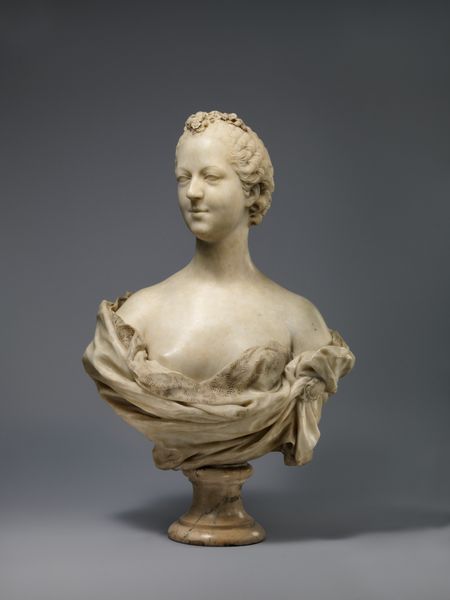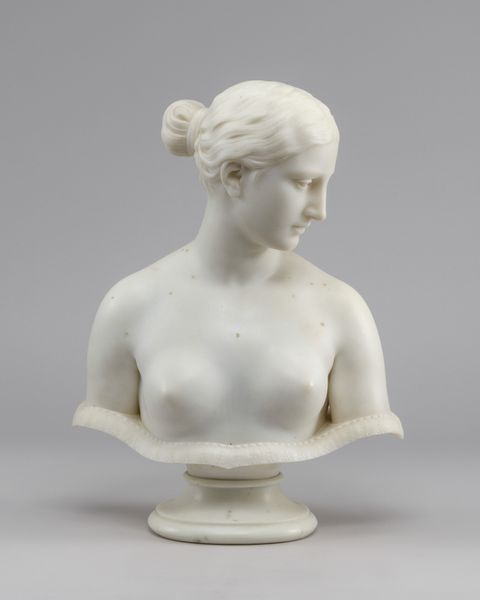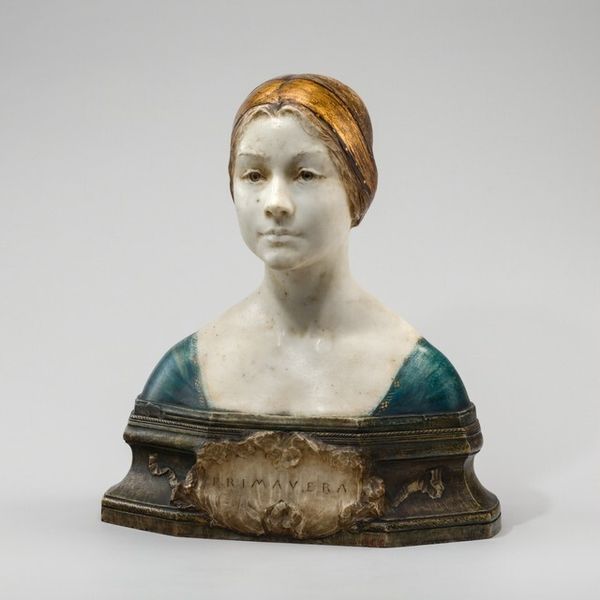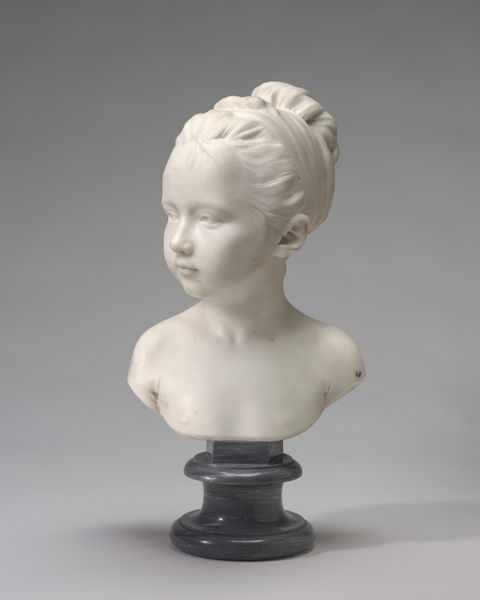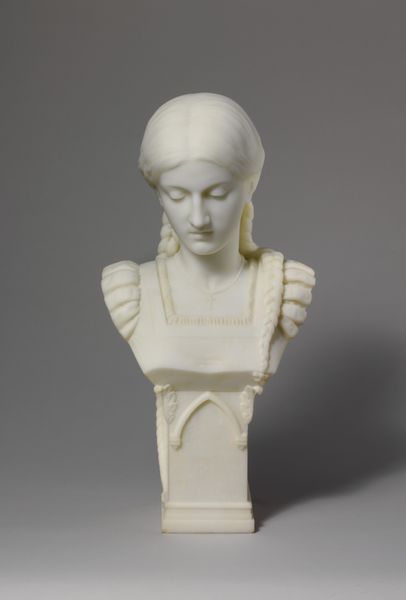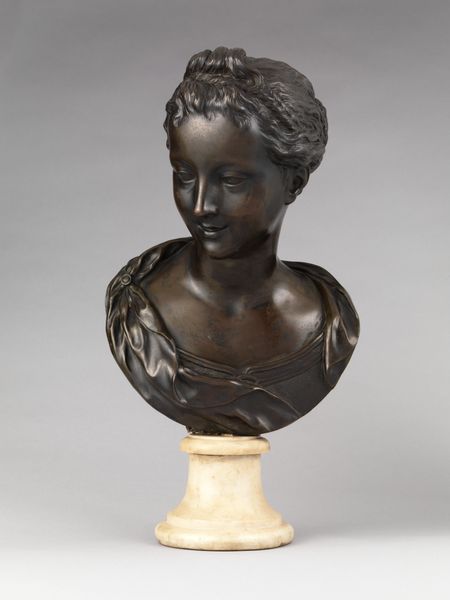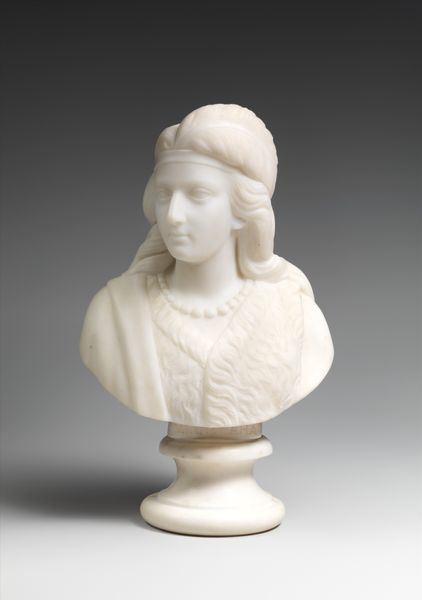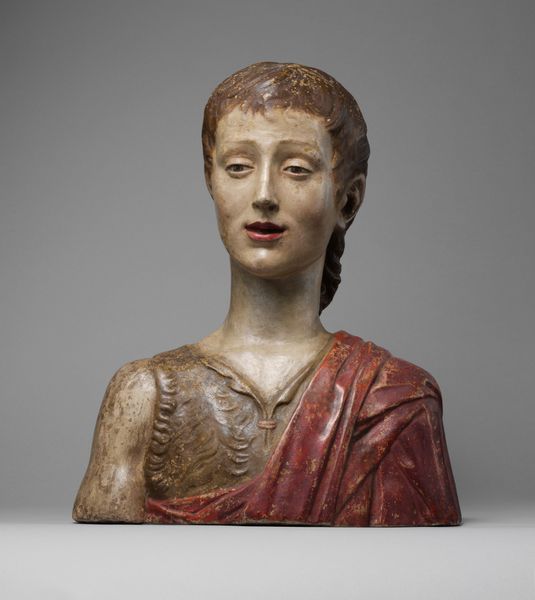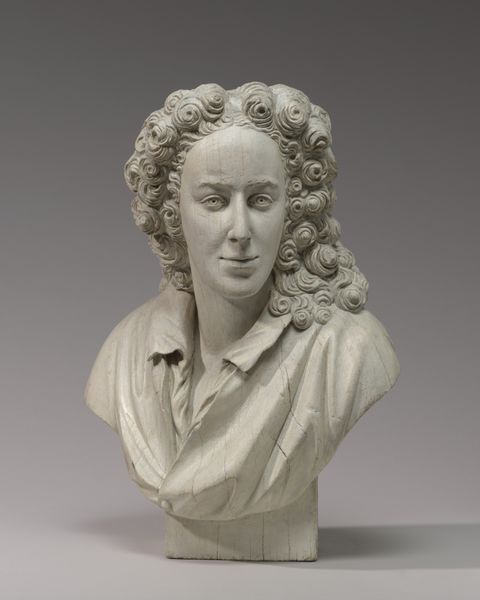
sculpture, marble
#
portrait
#
figuration
#
sculpture
#
history-painting
#
marble
#
italian-renaissance
Dimensions: overall: 44.4 x 45.2 x 22.1 cm (17 1/2 x 17 13/16 x 8 11/16 in.)
Copyright: National Gallery of Art: CC0 1.0
Editor: Here we have Francesco Laurana’s marble bust, "A Princess of the House of Aragon," created around 1475. The smooth, almost porcelain-like finish is striking. What can you tell me about it? Curator: The piece presents a compelling study in the material constraints and possibilities within the context of 15th-century marble sculpture. Consider the labor involved: quarrying, transporting, carving, and polishing. This was an expensive and time-consuming undertaking, signifying status. Who would have commissioned it and why? Editor: So, it wasn't just about artistic expression but about showing wealth and power? Curator: Exactly. Think about the selection of marble itself – its pristine quality and whiteness, signaling purity and refinement. And consider the social context. Italian Renaissance workshops relied on skilled artisans and apprentices. Understanding their labor helps us appreciate the final product. Editor: The base has some very interesting relief work. Are those classical figures? Curator: Yes, they are, and they point to a fascinating intersection of classical ideals and contemporary display practices. How would this object have functioned in the domestic space of a wealthy family? Would it have signaled their education, their lineage, or both? How does that alter our perception of a work which today lives within a museum? Editor: So, rather than just seeing a beautiful sculpture, we should be thinking about the socio-economic machine that produced it, and how that machine informed the imagery itself. It gives a richer and quite unexpected texture to this otherwise serene work. Curator: Precisely! By focusing on the means of production and the circulation of the artwork, we can uncover layers of meaning that are often overlooked in traditional art historical analyses.
Comments
No comments
Be the first to comment and join the conversation on the ultimate creative platform.
